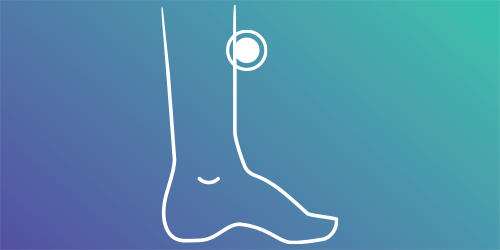
Shin Pain is a very common lower leg complaint that usually manifests itself as shin splints. Shin splints are characterised by pain in the front or side of the lower leg. It is especially common among people involved in athletic pursuits such as running and walking, although non athletic activities such as standing all day at work can also lead to shin splints. Symptoms include tightness, tenderness to the touch along the edge of the shin bone (tibia) and throbbing of the shins during and after activity. The symptoms often disappear at rest then return as soon as activity is resumed.
What causes Shin Pain/ Shin Splints?
- A sudden increase in activity is the most common cause either when first starting an exercise program or when increasing distances to quickly.
- Exercising on hard surfaces.
- Tight lower leg muscles.
- Exercising in shoes with inadequate support and/or cushioning.
- Biomechanical factors such as excessive pronation of the foot are considered to be significant contributing factors in the cause of shin pain. When the foot contacts the ground taking all our weight, it rolls inwards (pronates) to absorb the shock of our body weight hitting the ground. One of the important muscle groups helping to control this motion are the muscles in our shins. When the foot pronates too far or too fast these muscles are overworked and become fatigued and painful.
- Shin Pain can be a result of a stress fracture in one of the bones in the shin, the Tibia or Fibula.
How do we treat Shin Pain/ Shin Splints?
- A Lower Limb Musculoskeletal Assessment is great for an accurate diagnosis and treatment plan to help with your pain. This Assessment is a series of clinical tests to determine the underlying cause of the pain and discomfort you are experiencing. At the end of the assessment, our Podiatrist will give you a treatment plan which may include orthotics, supported by exercises and shoe recommendations.
- The aim of the treatment is to reduce the amount of the excessive pronation of the foot which will in turn reduce the overworking action of the tibialis posterior muscle which is one of the main causes of shin pain. An orthotic does this best by maximising normal foot function. Orthotics offer excellent shock absorption due to the material used and will restore the foot and its posture to the right biomechanical position.
- Muscle stretching and strengthening
- Reduce exercise to pain free activity only

